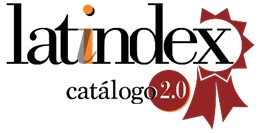Explorando aspetos do pensamento computacional em projetos de modelação matemática: Ideias decorrentes de uma semana de projetos numa escola secundária alemã
DOI:
https://doi.org/10.48489/quadrante.36870Palavras-chave:
pensamento computacional, modelação matemática, educação matemática, ensino secundário, resolução de problemas, educação STEMResumo
Este estudo investiga o papel do pensamento computacional (PC) em projetos de modelação matemática na disciplina de matemática no ensino secundário. Conduzimos um projeto de modelação matemática de quatro dias com 14 alunos do 9º ao 11º ano, durante uma semana de projetos, antes das férias de verão, numa escola secundária na Alemanha. As nossas observações revelaram que vários aspectos do PC, como a coleta de dados, o reconhecimento de padrões e a abstração, emergiram naturalmente nas atividades de modelação dos alunos, com esses aspectos estando intimamente ligados à natureza específica dos problemas de modelagem. Esses resultados sugerem que os projetos de modelação matemática oferecem oportunidades profícuas para desenvolver capacidades de PC nos alunos. Além disso, a nossa investigação destaca como o incentivo do PC pode enriquecer o processo de modelação e ajudar os alunos no processo de resolução de problemas matemáticos. Ao ilustrar a sinergia entre o PC e a modelação matemática, este estudo sublinha o potencial de integrar o pensamento computacional na educação matemática para preparar melhor os alunos para os desafios da era digital.
Referências
Aebli, H. (2019). Zwölf Grundformen des Lehrens: Eine allgemeine Didaktik auf psychologischer Grundlage: Medien und Inhalte didaktischer Kommunikation, der Lernzyklus (15th ed.). Klett-Cotta.
Ang, K. C. (2021). Computational Thinking and Mathematical Modelling. In F. K. S. Leung, G. A. Stillman, G. Kaiser, & K. L. Wong (Eds.), Mathematical Modelling Education in East and West (pp. 19–34). Springer International Publishing. https://doi.org/10.1007/978-3-030-66996-6_2
Blum, W., & Leiß, D. (2007). 5.1—How do Students and Teachers Deal with Modelling Problems? In C. Haines, P. Galbraith, W. Blum, & S. Khan (Eds.), Mathematical Modelling (pp. 222–231). Woodhead Publishing. https://doi.org/10.1533/9780857099419.5.221
Bock, W., & Bracke, M. (2015). Applied School Mathematics—Made in Kaiserslautern. In H. Neunzert & D. Prätzel-Wolters (Eds.), Currents in Industrial Mathematics: From Concepts to Research to Education (pp. 403–437). Springer. https://doi.org/10.1007/978-3-662-48258-2_11
Bock, W., Bracke, M., & Capraro, P. (2017). Product orientation in modeling tasks. In T. Dooley & G. Gueudet (Eds.), Proceedings of CERME 10. Dublin, Ireland. DCU Institute of Education and ERME. https://hal.science/hal-01933444
Borromeo Ferri, R. (2007). Modelling problems from a cognitive perspective. In C. Haines, P. Galbraith, W. Blum, & S. Khan (Eds.), Mathematical Modelling (pp. 260–270). Woodhead Publishing. https://doi.org/10.1533/9780857099419.5.260
Dong, Y., Catete, V., Jocius, R., Lytle, N., Barnes, T., Albert, J., Joshi, D., Robinson, R., & Andrews, A. (2019). PRADA: A practical model for integrating computational thinking in K-12 Education. Proceedings of the 50th ACM Technical Symposium on Computer Science Education (pp. 906–912). https://doi.org/10.1145/3287324.3287431
Greefrath, G. (2011). Using Technologies: New Possibilities of Teaching and Learning Modelling – Overview. In G. Kaiser, W. Blum, R. Borromeo Ferri, & G. Stillman (Eds.), Trends in Teaching and Learning of Mathematical Modelling (Vol. 1, pp. 301–304). Springer. https://doi.org/10.1007/978-94-007-0910-2_30
Greefrath, G., & Vorhölter, K. (2016). Teaching and learning mathematical modelling: approaches and developments from German speaking countries. In G. Greefrath & K. Vorhölter (Eds.), Teaching and Learning Mathematical Modelling: Approaches and Developments from German Speaking Countries (pp. 1–42). Springer. https://doi.org/10.1007/978-3-319-45004-9_1
Kalelioğlu, F., Gülbahar, Y., & Kukul, V. (2016). A framework for computational thinking based on a systematic research review. Baltic Journal of Modern Computing, 4(3), 583–596.
Kallia, M., van Borkulo, S. P., Drijvers, P., Barendsen, E., & Tolboom, J. (2021). Characterising computational thinking in mathematics education: A literature-informed Delphi study. Research in Mathematics Education, 23(2), 159–187. https://doi.org/10.1080/14794802.2020.1852104
Mayring, P. (2014). Qualitative content analysis: Theoretical foundation, basic procedures and software solution. Klagenfurt. https://nbn-resolving.org/urn:nbn:de:0168-ssoar-395173
Schoenfeld, A. H. (1987). Pólya, problem solving, and education. Mathematics Magazine, 60(5), 283–291. https://doi.org/10.1080/0025570X.1987.11977325
Selby, C., & Woollard, J. (2013). Computational thinking: The developing definition [Monograph]. University of Southampton. https://eprints.soton.ac.uk/356481/
Shute, V. J., Sun, C., & Asbell-Clarke, J. (2017). Demystifying computational thinking. Educational Research Review, 22, 142–158. https://doi.org/10.1016/j.edurev.2017.09.003
Teck, L. K., Abdullah, A. H., Mokhtar, M., Zainuddin, S. A. H. S., & Rahman, S. N. S. A. (2023). The development of computational thinking and mathematics problem solving skills through mathematics modelling activities. Sains Humanika, 15(2), Article 2. https://doi.org/10.11113/sh.v15n2.1987
Villa-Ochoa, J. A., Carmona-Mesa, J. A., Quiroz-Vallejo, D. A., Castrillon-Yepes, A., & Farsani, D. (2022). Computational thinking in mathematical modeling projects. A case study with future mathematics teachers. In Á. Rocha, C. Ferrás, A. Méndez Porras, & E. Jimenez Delgado (Eds.), Information Technology and Systems (Vol. 414, pp. 460–470). Springer. https://doi.org/10.1007/978-3-030-96293-7_38
Weintrop, D., Beheshti, E., Horn, M., Orton, K., Jona, K., Trouille, L., & Wilensky, U. (2016). Defining computational thinking for mathematics and science classrooms. Journal of Science Education and Technology, 25(1), 127–147. https://doi.org/10.1007/s10956-015-9581-5
Wing, J. M. (2006). Computational thinking. Communications of the ACM, 49(3), 33–35. https://doi.org/10.1145/1118178.1118215
Wing, J. M. (2010). Computational Thinking: What and Why?. https://www.cs.cmu.edu/~CompThink/resources/TheLinkWing.pdf
Ye, H., Liang, B., Ng, O.-L., & Chai, C. S. (2023). Integration of computational thinking in K-12 mathematics education: A systematic review on CT-based mathematics instruction and student learning. International Journal of STEM Education, 10(1), 3. https://doi.org/10.1186/s40594-023-00396-w











